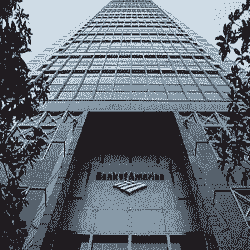Investment Finance in Economic Development
Book by Routledge, 1995 USA
Preface
One common assumption in models of finance and economic development is that saving is a precondition to investment and economic growth-an assumption which we call hereafter the 'prior-saving' argument. The two-gap models, for instance, claim that external saving is required for development if both the investment-saving and the import-export gaps are to be overcome. The prior-saving argument is also present in the financial liberalisation models, which maintain that internal saving/ investment can be increased by stimulating savings with positive interest rates and by enhancing the competition between financial institutions through financial deregulation. The mention of these two models in this preface is not random, as they have been influential for policy purposes in multilateral agencies as much as in less developed countries' (LDCs') governments. For instance, the two-gap models were fashionable in the 1970s, and were to a great extent used to support the mounting of foreign debt by LDCs. When the debt crisis began in 1982 and voluntary capital inflows rapidly declined, the financial liberalisation models became the main theoretical foundation behind the financial policies advocated by multilateral development agencies such as the World Bank and the International Monetary Fund to LDCs.
This book fully accepts the importance for economic development of efficiency of the allocation of real and financial resources, and subscribes the view that financial development is an important facet of the process of development. However, it also claims that the prior-saving argument is a fallacious foundation to understand the problems concerning the financing of growth and is misleading as the basis for a policy towards financially sustainable development. That the prior-saving argument is a pre-Keynesian concept is recognised by many post-Keynesians. Notwithstanding, few have explicitly acknowledged the full consequence for the analysis of finance and growth, let alone of finance and economic development, of the reversal of causality between investment and saving proposed by Keynes. This reversal in turn relies on a sharp distinction between finance and saving. In this book, this distinction is used in search for an alternative approach to the role of banks, saving and financial markets in the process of development, along postKeynesian lines. Our adherence to post-Keynesian theory does not mean, though, that this theory can be straightforwardly used to analyse problems concerning the financing of economic development. Post-Keynesian theory is based on a specific type of financial system, with well-developed banking and non-banking financial institutions and markets for a diversified range of financial assets. Most developing countries, in contrast, do not have developed financial markets, and growth has to depend heavily on bank credit. Such credit-based financial structures need to develop alternative institutions to finance-and, especially, fund-long-term investment, to avoid the risk of financial instability and other possible adverse side-effects of growth. Therefore, the theoretical modifications to post-Keynesian theory, necessary in applications to developing countries, are discussed in this book in the context of the Brazilian case.
Introduction
In the preface to this book, we expressed our dissatisfaction with the conventional, prior-saving view on finance and economic development. This book, in effect, should be seen as a long essay in persuasion of the need to pursue alternatives to such an established view. The postKeynesian theory is used as 'large shoulders' in this search for one possible theoretical alternative. In contemporary post-Keynesian theory, finance in a monetary production economy is sharply distinguished from saving-which is said to derive from, rather than be a pre-condition for, growth. Investment is the motor of accumulation and finance is what permits investment decisions to materialise. The supply of finance is causally determined by banks: it is banks, and not savers, who hold a key position in the process of growth. Only if they share the optimism of entrepreneurs in periods of growth or are led, for any other reason, to accommodate the demand for investment finance, can the monetary production economy grow.
|
